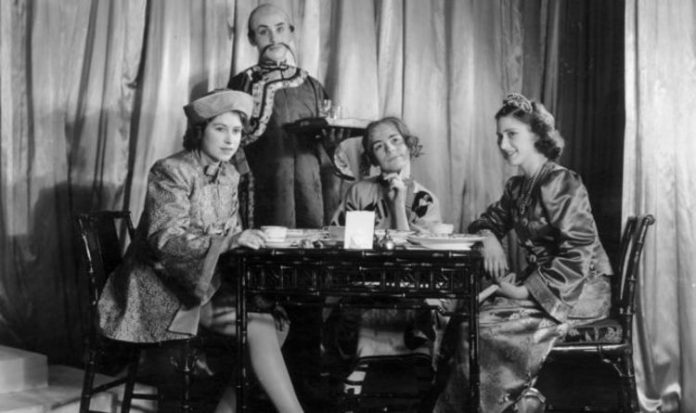Indeed, the Queen’s return to Windsor for the festive season will bring back memories of her youth putting on festive shows for the family. Her socially distanced royal visitors have gone and now the Queen and Prince Philip have begun a three-week break alone at Windsor Castle, a world away from the family-filled fun of Christmases past. But the festive season at Windsor still holds a special place in the Queen’s heart.
It’s where she fell in love with Philip and where the fondest memories of her sister, her mother and her father are cherished.
During the Second World War, Elizabeth and younger sister Margaret were evacuated to Windsor’s Royal Lodge where the King and Queen joined them at weekends, away from leading the nation’s war efforts from Buckingham Palace.
These years would become an essential part of the Royal Family history when the princesses staged a series of royal pantomimes to raise funds to aid servicemen.
It started with a Nativity play put on in 1940, with Elizabeth – aged 14 – playing one of the Three Kings and Margaret as the Little Child with a supporting cast of local schoolboys.
Father King George VI was moved and wrote in his diary: “I wept through most of it.”
Between 1940 and 1944 the sisters tackled Cinderella, Sleeping Beauty, Aladdin and Old Mother Red Riding Hood.
One family friend explained: “The whole castle would be swept up in the excitement. The costumes were made from recycled uniforms, clothes and old furniture fabric and everyone mucked in, even the King. It was a wonderful distraction at a time when there was lots of bad news.”
They recalled: “Some of the young guardsmen stationed at the castle would get roped in for scene shifting or playing some of the small parts and children from the local schools would join in on stage.
“It was a valuable lesson to the princesses in how to work with people from all sorts of backgrounds.”
The shows were a cut above most. Scripts came from Hubert Tannar, the headmaster of Windsor Great Park’s Royal School, and music from the Salon Orchestra of the Royal Horse Guards.
But the pantos were not just for family and servants, they were put on for the public who paid an entrance fee with profits going to the Queen’s Wool Fund, which provided comforts for Britain’s fighting forces.
In his book The Royal Family at War, author Theo Aronson said Elizabeth thought the ticket price of 7/6 (37.5p) was too high and protested: “No one will pay to look at us!”
A younger but already more worldly Margaret disagreed, saying: “Nonsense! They’ll pay anything to see us.”







